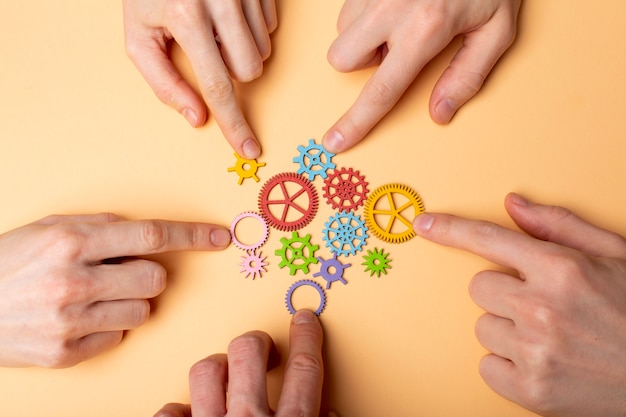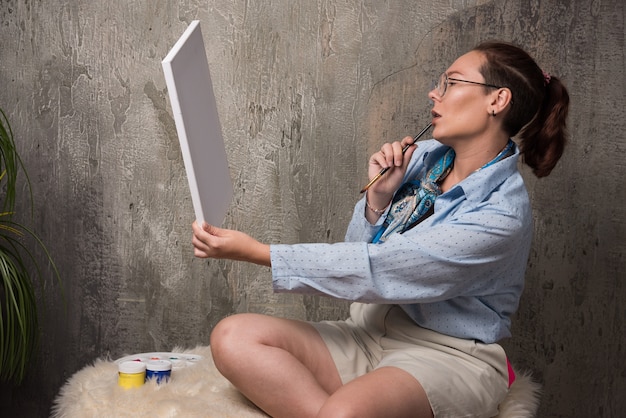Three-dimensional (3D) printing, while revolutionary, is not without its challenges. A range of errors can occur throughout the printing process, from initial model design flaws to printer malfunctions. Understanding the root causes of these errors and implementing appropriate solutions is crucial for achieving successful prints. This comprehensive guide explores common 3D printing errors, categorizes them by their origin (design, slicing, printer hardware, and material), and details effective troubleshooting strategies. The information provided aims to empower users to diagnose problems accurately and implement corrective actions, ultimately leading to improved print quality and efficiency.
I. Understanding the 3D Printing Process and Potential Error Sources

Before delving into specific errors, it is vital to understand the fundamental steps involved in 3D printing. The process generally involves:
- Design: Creating a 3D model using CAD software.
- Slicing: Converting the 3D model into instructions for the printer (G-code).
- Printing: The printer follows the G-code to build the object layer by layer.
- Post-processing: Cleaning, supporting, and finishing the printed object.
Errors can occur at any of these stages. Understanding this workflow helps pinpoint the likely source of a problem. The following sections categorize common errors based on their origin.
II. Design-Related Errors

A. Model Geometry Issues
Incorrectly designed models are a frequent source of printing problems. These issues include:
- Non-manifold geometry: This occurs when surfaces intersect incorrectly, creating ambiguous geometry that the slicer cannot interpret. Solutions involve using CAD software to repair the model’s geometry, ensuring all surfaces are properly connected and closed.
- Overlapping surfaces: Similar to non-manifold geometry, overlapping surfaces confuse the slicer, leading to failed prints. Careful model editing is necessary to resolve this issue.
- Thin walls or features: Excessively thin walls or features may collapse during printing due to insufficient material support. Increasing wall thickness or adding internal supports can mitigate this problem. Using infill can add significant strength to the print and reduce the likelihood of failure.
- Unsupported overhangs: Overhanging parts without adequate support will droop or collapse. Support structures must be strategically added during the slicing process to counter gravity.
- Insufficient clearance between parts: Closely spaced parts may fuse together during printing. Adjusting the model’s design to create adequate separation is crucial.
B. Model Orientation
The orientation of the model on the print bed significantly impacts print success. Poor orientation can lead to:
- Increased support material: An inefficient orientation may necessitate extensive support structures, increasing print time and material consumption. Careful consideration of the model’s orientation on the build plate can minimize the need for supports.
- Warping or deformation: Large flat surfaces can warp during cooling. Optimizing orientation to minimize the size of these surfaces can reduce warping.
- Print failures due to overhangs: Improper orientation may create extensive overhangs, leading to print failures. Rotating the model to minimize overhangs can improve success rates.
III. Slicing-Related Errors
A. Incorrect Slicer Settings
Errors in slicer settings can drastically affect print quality and success. Common mistakes include:
Read Also: 2013 Dollar Bill Printing Errors: A Collector’s Guide – Printing Test Pages
- Incorrect layer height: Too high a layer height can result in a rough surface finish, while too low a layer height can increase print time and potentially lead to clogging. Finding the optimal layer height is crucial for a balance of quality and efficiency. This is highly dependent upon the nozzle size.
- Inappropriate infill density: Insufficient infill density can create weak prints, especially for large or complex models. Excessive infill increases print time and material usage. The infill density should match the design’s intended use.
- Incorrect support settings: Inadequate support structure settings can result in failed overhangs. Overly dense supports can make removing them difficult. The type, density, and placement of support structures should be carefully selected.
- Insufficient bed adhesion settings: Incorrect bed adhesion settings (temperature, raft/brim size) can cause prints to detach from the bed during printing.
- Incorrect print speed: Too fast a print speed can lead to poor layer adhesion and inaccurate dimensions. Too slow a print speed increases print time excessively.
B. G-Code Errors
Errors in the generated G-code can lead to printing failures. These errors may be caused by:
- Slicer bugs: Although less common, slicer software can contain bugs that result in flawed G-code. Using a well-maintained and reputable slicer minimizes this risk.
- Incompatibilities: G-code generated for one printer type may not be compatible with another. Ensure compatibility between the slicer and the printer model.
IV. Printer Hardware-Related Errors
A. Mechanical Issues
Mechanical problems within the printer itself are another source of printing failures. These can include:
- Nozzle clogs: Clogged nozzles prevent filament extrusion, leading to incomplete layers or print failures. Regular nozzle cleaning and maintenance are essential. Different filaments may require different temperatures and cleaning methods.
- Extruder issues: Problems with the extruder, such as inconsistent filament feeding or gear slippage, can result in inconsistent extrusion and print failures. Proper calibration and maintenance of the extruder are crucial.
- Bed leveling problems: An uneven print bed leads to inconsistent layer adhesion and warping. Regular bed leveling is necessary to ensure proper adhesion across the entire print surface. Different bed materials may require different leveling techniques.
- Loose belts or screws: Loose belts or screws can cause inaccurate movement of the print head or bed, leading to dimensional inaccuracies and print failures. Regular tightening of these components is essential for maintaining print accuracy.
- Z-axis binding: Binding in the Z-axis mechanism can cause layer adhesion problems and dimensional inaccuracies. This often requires specialized attention and may involve lubrication or replacement of parts.
B. Electrical Problems
Electrical issues can also cause 3D printing errors. These include:
- Power supply problems: Insufficient power can lead to inconsistent performance and print failures. Ensuring a stable power supply is crucial.
- Wiring issues: Faulty wiring or loose connections can cause erratic behavior or printer malfunctions. Careful inspection of all wiring is necessary.
- Heater malfunctions: Problems with the heating elements (nozzle or bed) can prevent proper material melting or bed adhesion. Troubleshooting heating elements may require specialized knowledge and safety precautions.
V. Material-Related Errors
The filament itself can be a source of printing problems. This includes:
- Moisture absorption: Many filaments, especially PLA and PETG, absorb moisture from the air. This can cause bubbling, cracking, or poor adhesion. Proper filament storage in a dry environment is essential. Using a desiccant can help reduce moisture absorption.
- Filament degradation: Old or improperly stored filament can degrade, leading to inconsistencies in extrusion and print quality. Using fresh filament ensures optimal performance.
- Filament diameter inconsistencies: Variations in filament diameter can cause inconsistencies in extrusion. Using a filament with consistent diameter is recommended.
- Incorrect material settings: Using the wrong temperature or print speed for a given filament can lead to printing failures. Checking material specifications is vital.
VI. Troubleshooting Strategies
Effective troubleshooting involves a systematic approach. Begin by:
- Identifying the error: Carefully examine the failed print to identify the type of error (e.g., warping, layer adhesion problems, nozzle clogging).
- Reviewing the print settings: Check slicer settings, ensuring they are appropriate for the chosen filament and printer.
- Inspecting the hardware: Check for any mechanical or electrical issues in the printer.
- Testing the filament: Ensure the filament is dry, free from defects, and appropriate for the chosen print settings.
- Performing a test print: A simple test print can help identify if the problem is related to the model, slicer settings, or hardware.
Often, a combination of factors contributes to 3D printing errors. Careful observation and a systematic approach to troubleshooting are key to achieving successful prints.
VII. Importance of Accurate Troubleshooting in 3D Printing
The ability to accurately troubleshoot 3D printing errors translates directly into increased efficiency, reduced material waste, and ultimately, higher-quality finished products. Rapidly identifying and resolving these issues minimizes downtime, allowing for uninterrupted production. In professional settings, this translates to significant cost savings and improved project timelines. Furthermore, expertise in troubleshooting fosters a deeper understanding of the 3D printing process, enhancing the user’s ability to optimize settings and achieve consistently high-quality results.
VIII. Resources for Further Learning
Numerous online resources offer further support for those seeking to expand their troubleshooting capabilities. These include online forums dedicated to 3D printing, manufacturer websites offering troubleshooting guides specific to their printer models, and video tutorials demonstrating various troubleshooting techniques. Engaging with these resources can provide valuable insight and assistance in resolving complex printing issues. The constant evolution of 3D printing technology necessitates ongoing learning and adaptation to new materials and techniques.

